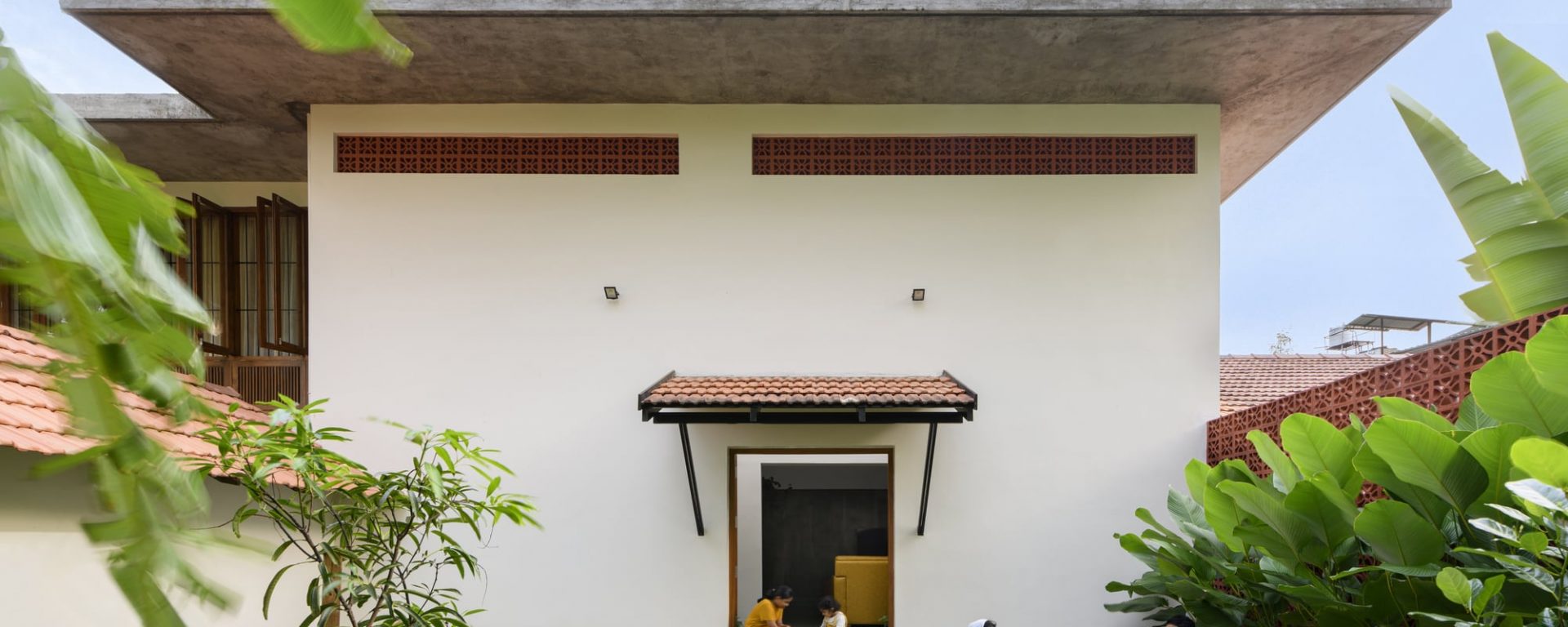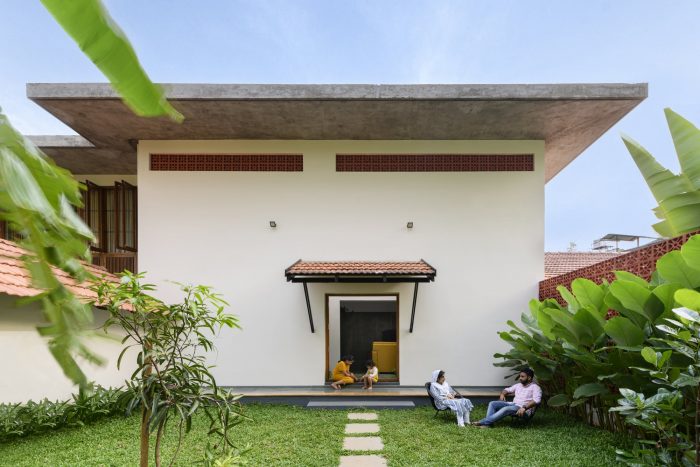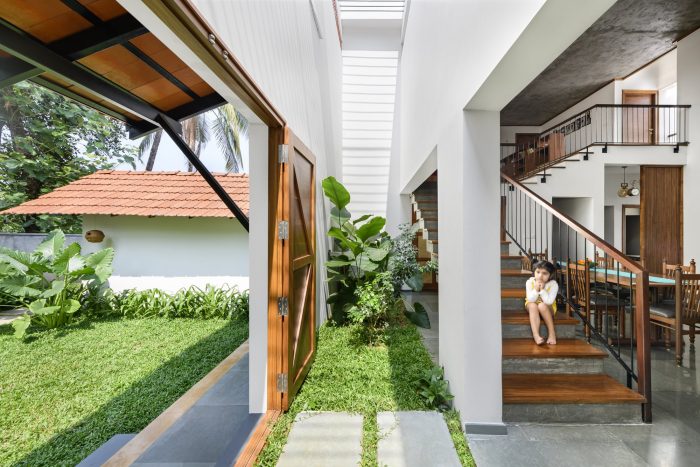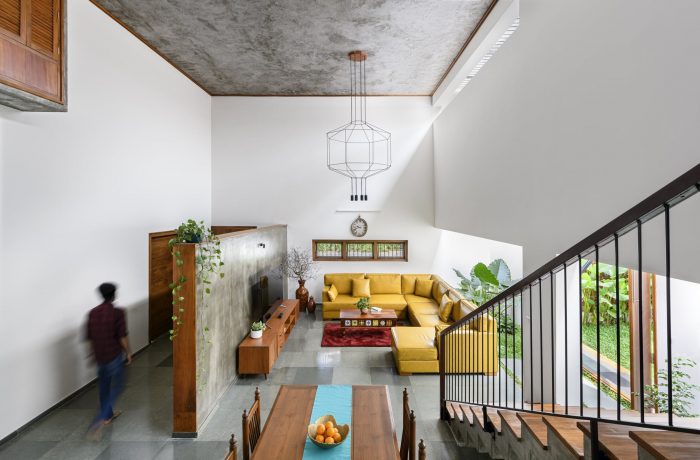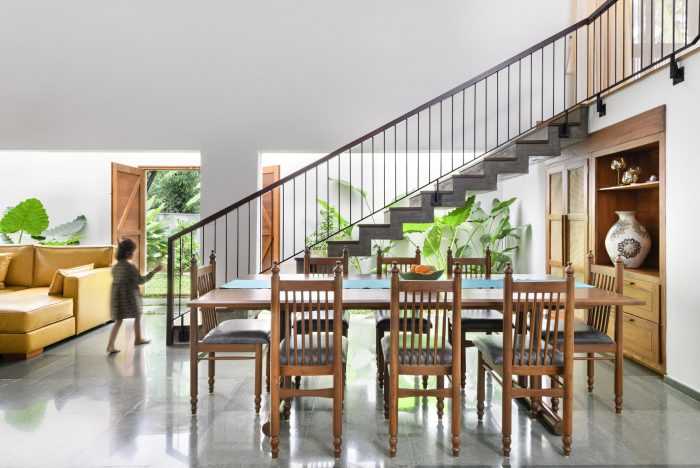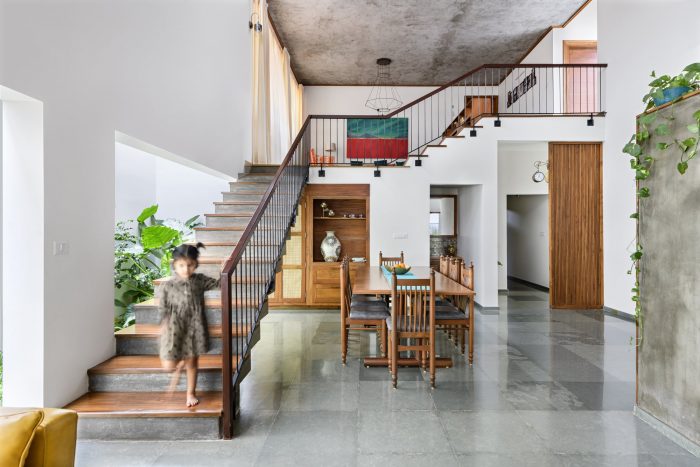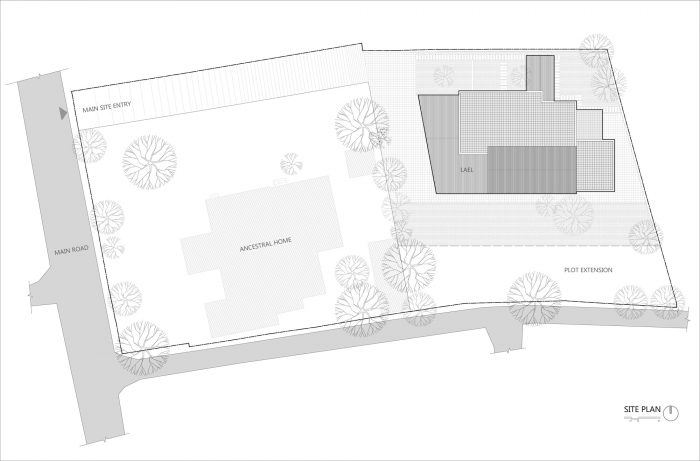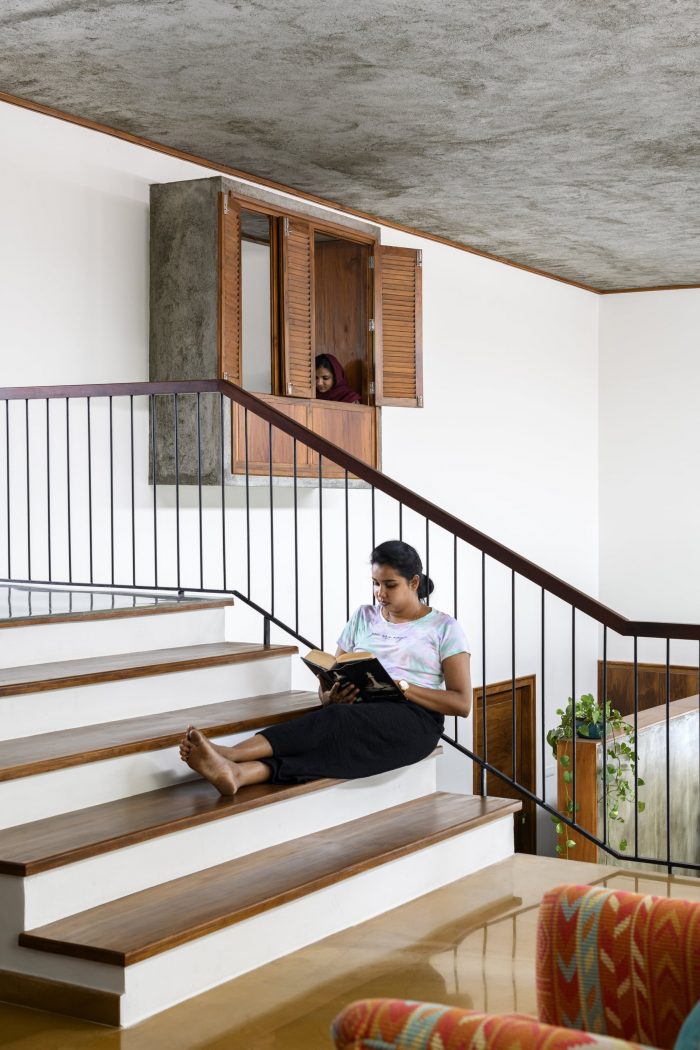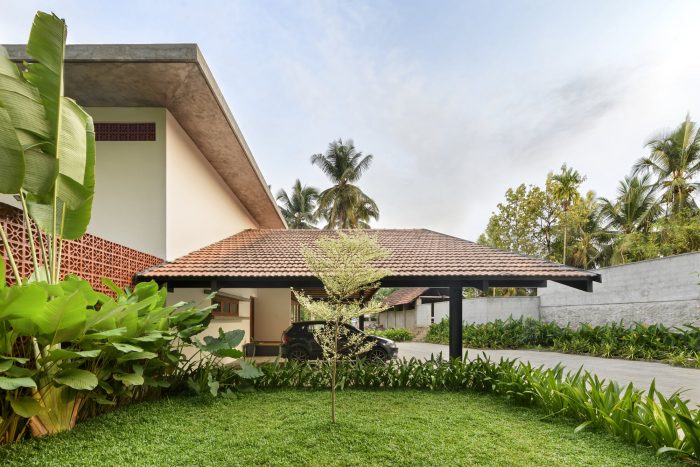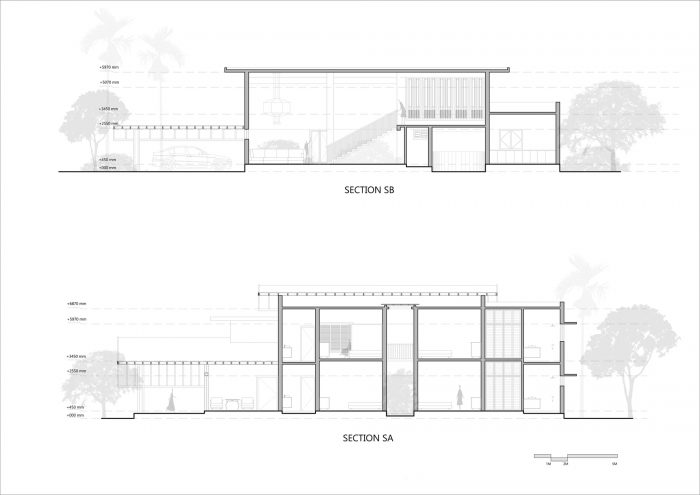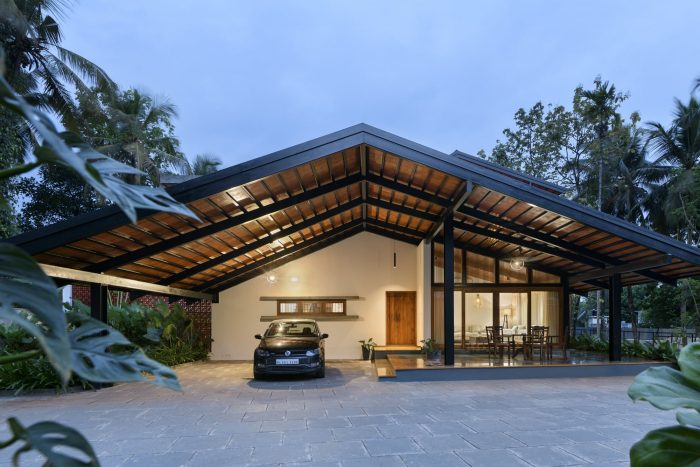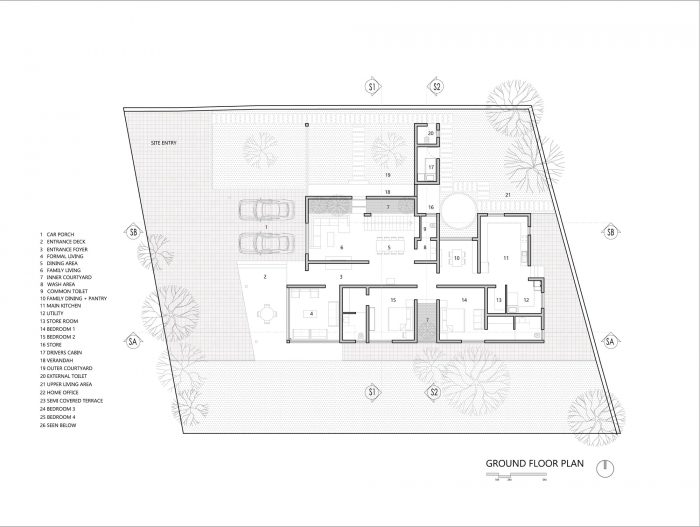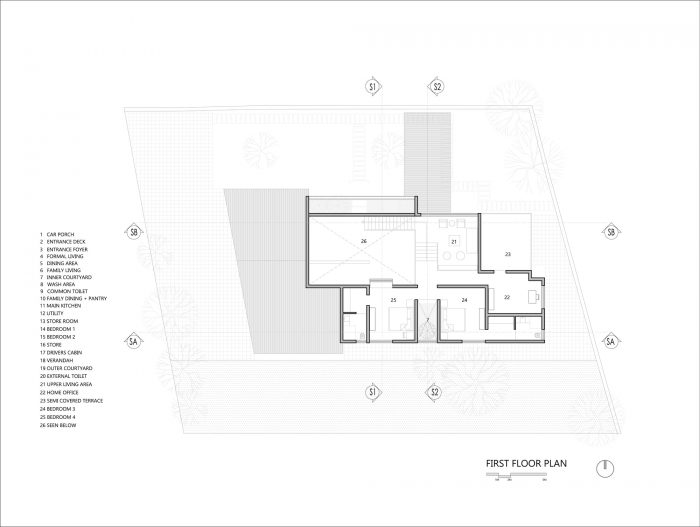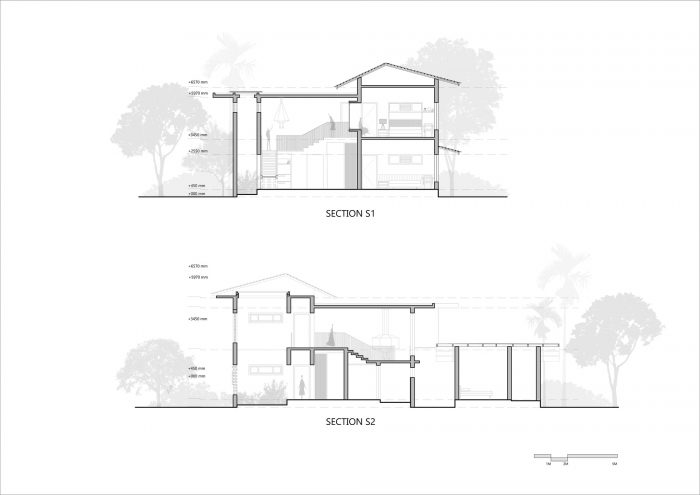位于曼纳卡德镇繁华地区的政府机构中,客户主要要求的是一个远离喧嚣城市的舒适住所。由于场地周边包括前院高架上的祖屋,使得场地在水平方向上远离道路,同时由于场地低于主干道水平线近3米,这有助于创造一个远离城市混乱的缓冲区。
Located amidst the government institutions in the busy region of Mannarkad town, one thing that the client predominantly demanded was a comfortable dwelling away from the bustling city. Since the site perimeter included the ancestral home on an elevated level in the front yard making the site horizontally away from the road and also as the site was almost 3m below the main road level, it helped to create a buffer from the chaos of the city.
Lael的最初概念来自于场地条件。由于这是一片荒芜的土地,视野极小,我们的主要座右铭是将景观整合到建筑内,以提高空间的可居住性,并在住宅内外提供一个热带环境。这种融合有助于进一步将空间划分为公共区域、私密区域和服务区域,并通过无形的连接线来实现。
The initial concept of Lael emerged from the site conditions. As it was a barren land with minimal vistas, our main motto was to integrate landscape within the built closure in a way to enhance the liveability of the spaces and provide a tropical setting inside and outside the dwelling. This amalgamation thus helped in further zoning out the volume of spaces as public, intimate, and service areas with an invisible thread of connectivity.
建筑构成的亮点是散布在规划中心的多个聚会空间。这些空间是根据客户的生活方式设计的,他们喜欢最大限度地与朋友和家人一起玩耍的空间。因此,我们创造了多层次的聚会空间,其中中央的双层高度是建筑环境的核心。它作为其他空间的主要照明和通风来源。这个朝北的公共区域通过具有中间墙体的双层砌体为生活空间带来了过滤的北面光线和风。
The limelight of the architectural composition is the multiple gathering spaces scattered across the center of the plan. These spaces were designed with respect to the clients’ lifestyle, where they preferred maximum hangout spaces to spend with friends and family. Hence, we created multilevel gathering spaces in which the central double-height is the heart of the built environment. It acts as the main source of lighting and ventilation for the rest of the spaces. This northern facing common area brings in filtered northern light and wind to the living space via the double-wall masonry having intermediate jallis.
夹层毫不费力地将第一层与中央核心融合在一起,从而不由自主地将所有的公共区域变成一个整体。建筑空间的私人核心通过南侧呈线性分布,那里厚厚的树冠有助于缓冲南方阳光的热量,也能过滤西南风,使其进入卧室之间的中间双层庭院。屋顶设计严格按照热带气候条件进行,在斜坡上提供最大的悬垂。外立面的单个巨大斜屋顶成为建筑形式的主要设计驱动因素。
The mezzanine effortlessly blends the first floor with the central core, thereby involuntarily turning all the common areas into a single entity. The private core of the built space lies linearly via the southern side where the thick canopy of trees helps to buffer the heat from the southern sun and also filter the south-west winds into the intermediate double-height courtyard between the bedrooms. The roof design was strictly done following the tropical climatic conditions by providing maximum overhang on the slopes. The single massive sloping roof in the facade acts as a major design driving factor of the built form.
室内材料和色调的选择考虑到了住宅的自然和热带主题。木质细木工板、无缝白墙、混凝土质地的天花板、天然科塔石地板;总之,构成了一个令人愉快的材料组合。Lael(属于上帝)住宅描绘了一个完美的例子,说明建筑如何能够在最小的范围和潜力的场地上带来卓越的空间。
The interior material and color palettes were selected taking care of the natural and tropical theme of the residence. Wooden joineries, seamless white walls, and concrete textured ceilings, natural Kota stone flooring; altogether, constituted a pleasant composition of materials. Lael (belonging to God ) residence depicts a perfect example of how architecture can bring out spatial excellence even in a site with minimal scope and potential.
Architects: Barefoot Architects
Area : 400 m²
Year : 2022
Photographs :Justin Sebastian
Manufacturers : Faber, Hafele, Hettich, Kohler, Saint-Gobain, Asian Paints, Jaguar, Voltas
Lead Architects : Basil Kalladi, Nithin Raj
Civil Contractor : Glenearth construction LLP
Structure : Glenearth construction LLP
Landscape Contractor : agrofarm
Design Team : Athira Balasubramannian, Farheen Haris, Khadeeja Henna, Naurin Offoor, Adarsh K P, Rashid Nalakath
Carpenter : Babu
Painting : Ramu
MEP & HVAC : Greenspark Infra Consultants Pvt Ltd
City : Mannarkkad
Country : India

